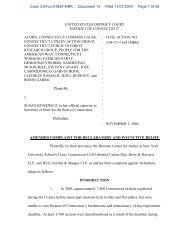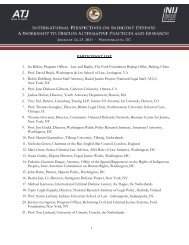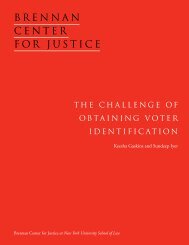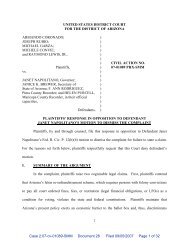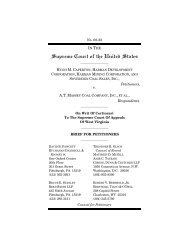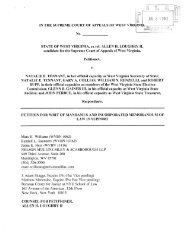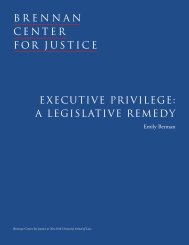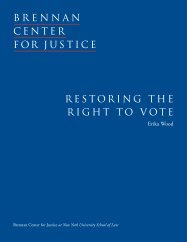THE NEW YORK STATE LEGISLATIVE PROCESS: AN ...
THE NEW YORK STATE LEGISLATIVE PROCESS: AN ...
THE NEW YORK STATE LEGISLATIVE PROCESS: AN ...
Create successful ePaper yourself
Turn your PDF publications into a flip-book with our unique Google optimized e-Paper software.
INTRODUCTION<br />
It has become something of a cliché to bemoan Albany’s dysfunctional legislative<br />
process and the “three men in a room” system of lawmaking. Virtually every<br />
major newspaper in New York State has editorialized for many years against<br />
the current system and its byproducts, including perennially late budgets, 1 the<br />
lack of open deliberation and debate, 2 empty seat voting, 3 gridlock, 4 costliness<br />
and inappropriate payments, 5 incumbency protection, 6 or the extent of control<br />
exercised by the two leaders. 7 In addition, a handful of academics and policy<br />
analysts have explored various aspects of the legislative process in greater depth<br />
and proposed reforms to improve the system. 8 Certain state legislators have proposed<br />
thoughtful reforms to their chambers’ rules, and others have complained<br />
behind closed doors about their lack of input into the legislative process. 9<br />
This study analyzes New York State’s legislative process in depth to answer several<br />
important questions: What precisely is dysfunctional about the current system?<br />
Is New York State’s legislative process unique? Why should New Yorkers<br />
care about the state of the current system in Albany? How did the current system<br />
develop in New York State? What, if anything, should be done specifically to<br />
change it? We have used quantitative, historical, and comparative data to document<br />
New York’s legislative process and to compare it, where possible, with that<br />
in other states and in the U.S. Congress.<br />
To obtain an accurate picture of the current legislative process, we analyzed data<br />
in seven areas. First, we analyzed all of the “major” laws – 308 laws identified as<br />
such by McKinney’s Session Law News of New York – passed by the Legislature and<br />
signed into law from 1997 through 2001. 10 For each of those laws, we documented<br />
the steps taken – or, in many cases, not taken – by legislators in each chamber<br />
to develop, debate, obtain public comment on, amend, read, and vote upon the<br />
legislation. To that end, we analyzed the records of committee votes on each of<br />
these laws from the Assembly’s Public Information Office and the Senate Journal<br />
Clerk’s Office, and where possible, interviewed staff of the bills’ sponsors to obtain<br />
additional information about committee hearings and reports on each bill. 11 We<br />
also analyzed the records of both chambers to determine the extent of debate on<br />
the floor of each chamber that was devoted to each bill, which bills were amended,<br />
and which bills were passed with a message of necessity from the governor to<br />
allow immediate passage. 12 Second, we analyzed the voting records of one committee,<br />
the Assembly Committee on Economic Development, Job Creation,<br />
Commerce and Industry, to determine how often the committee used each of the<br />
five options available when voting on a bill (favorable without amendment, favorable<br />
with amendment, favorable with referral to another committee, defeated, and<br />
held for consideration). 13 This analysis provides a snapshot of one committee’s voting<br />
patterns. Third, we interviewed numerous sitting members of the Assembly<br />
and Senate and members of their staff concerning various legislative procedures;<br />
these interviews were conducted on the condition of anonymity to ensure that<br />
their responses would be candid and that they would not face any negative conse-<br />
1



